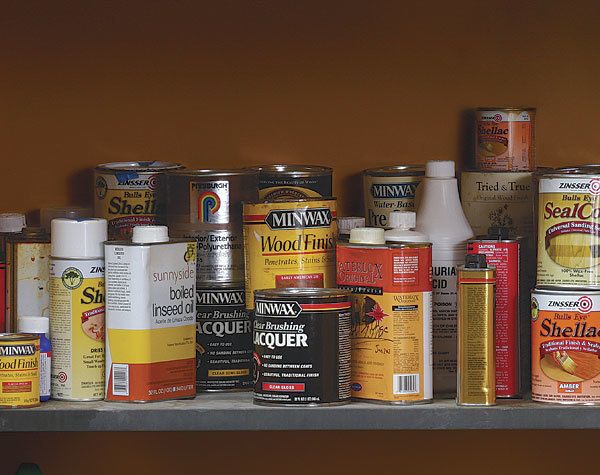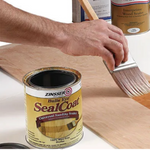All Finishes Have a Shelf Life
Finishing expert Jeff Jewitt explains how to make finishes last longer and how to tell when they’ve gone bad.

Synopsis: You may own tools that will last your lifetime, but the same can’t be said of the finishes in your cabinet. When you purchase a finish, the clock starts ticking. And it ticks even faster when you open that finish, or mix your own, and use some of it. Finishing expert Jeff Jewitt shows you how to maximize the shelf life of your finishing materials, whether you are using oils, shellac, polyurethane, or something else. (Often—but not always—the secret lies in keeping oxygen out.) Learn this tip and others, and you’ll avoid wasting time and money on a finish that has gone past its shelf life.
Few things are more annoying than opening a $30 quart of varnish you bought last year, only to find the remaining two-thirds has solidified into a gel. It’s an expensive reminder that tools may last a lifetime, but finishes don’t.
All finishes have a shelf life, which is the amount of time that a product remains usable. I’ll show you how to maximize the shelf life of finishing materials, and more importantly, how to tell when they’ve gone to the dark side.
I’m as cheap as anybody, but when it comes to finishes, “buy more, save more” isn’t a good strategy. Try to anticipate how much finish you’ll use over the next year and don’t buy more than that. Some manufacturers publish shelf-life figures and date products clearly, but many don’t.
Never buy cans with rusty lids, the ones you often see “on sale”—the condition of the can indicates poor storage or old age. Try to buy finishes like you buy milk: Look for a manufacturing date. If you don’t understand the dating code, ask a clerk for help. If there is no date, write the date of purchase on the can. Label all your finishes, including those you’ve mixed yourself.

Store finish in a cool place, between 55°F and 70°F. Chemical reactions accelerate as the temperature rises, and almost all processes that cause finish to go bad involve chemical reactions. A cool basement is better than a hot garage. Most finishes are OK if stored below 55°, with the exception of waterborne. If you work in a cold shop, store your waterborne finishes in the house, and never let them freeze. Bring all finishes up to 55° to 70° before you use them. Also, keep the lid tight. If necessary, transfer the product to a container with a tighter lid.
Any finish based on a drying oil will harden when exposed to oxygen. These include tung and linseed oils, so-called Danish oils, and oil-based varnishes and polyurethanes. If you’re not careful when storing these products, oxygen will cause them to harden prematurely.
When a can is full, there’s no room for oxygen. But as you use the finish, you create “head space” as the can fills with air. Exposed to oxygen, the finish will gradually skin over, or the whole liquid may start to gel. Kept in tightly sealed containers with minimal head space, raw or boiled linseed oil and tung oil can last five or more years. It might thicken with age, but if it isn’t cloudy and gummy, it should be usable. Danish oil-type products are mostly oil and solvent. They may thicken, but are usable as long as they are clear and liquid.
From Fine Woodworking #232
 For the full article, download the PDF below.
For the full article, download the PDF below.
Fine Woodworking Recommended Products

Bahco 6-Inch Card Scraper

Diablo ‘SandNet’ Sanding Discs








Log in or create an account to post a comment.
Sign up Log in